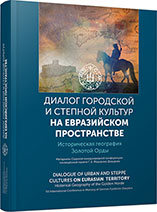Проблемы изучения памятников золотоордынского времени на территории Билярского городища и в его округе
Problems of Studies of the Golden-Horde Period Sites in the Territory of the Bilyar Hillfort Site and Its Environs
Author(s): Zufar G. Shakirov, Fayaz Sh. Khuzin
Subject(s): History, Archaeology, Geography, Regional studies, Human Geography, Historical Geography, Middle Ages, 13th to 14th Centuries, 15th Century
Published by: Издательский дом Stratum, Университет «Высшая антропологическая школа»
Keywords: Central Trans-Kama region; basin of Maly Cheremshan river; Golden Horde; Bilyar and its environs;medieval towns;
Summary/Abstract: In the vicinity of Bilyar (“Great City”), the capital of pre-Mongol Volga Bulgaria, there are 249 archaeological sites referring to the 10th — first half of the 15th century. Of these, 59 date back to the pre-Mongol and the Golden Horde periods, while 20 archaeological sites refer exclusively to the era of the Ulus Jochi. The collapse of the Great City occurred in 1236. This fact is established by both written and archaeological sources and serves as another argument in support of the view that the coins with the name of al-Nasir li-Din Allah were minted in the 1240s. Recent studies have made it possible to localize the restored “Golden-Horde Bilyar”, where coins were minted in the second half of the 13th century, not on the site of the destroyed city, as was thought previously, but rather in the territory of the vast Bilyar III and the Toretskoye settlement sites located 3 km north-west of it. The number of settlements declined almost 3-fold — up to 8 persons per 1 sq. km, with a corresponding decrease in the population density. The changes in settlement patterns and material culture of the Bilyar area population, characteristic of the other conquered territories as well, reflects the process of provincialization of the former pre-Mongol centers.
Book: Диалог городской и степной культур на Евразийском пространстве. Историческая география Золотой Орды
- Page Range: 145-149
- Page Count: 5
- Publication Year: 2016
- Language: Russian
- Content File-PDF

